How To Replace Spark Plugs
Overview
Inside of your engine are thousands of explosions every minute, each one ignited by a spark plug. It’s not surprising then that spark plugs wear out over time, causing a loss of power and fuel economy and even damage to your engine long term. Here we will go through not only step by step how to change spark plugs, but how to check spark plugs, and how to clean spark plugs as well to get the longest possible life out of them. If you'd like to revisit the basics before starting this DIY, we recommend checking out our handy guides on what are spark plugs and understanding spark plug part numbers.
How Often to Change Spark Plugs
Your spark plugs should be changed at the interval recommended in your owner’s manual, but there are a few tell-tale signs which may indicate that your spark plugs are due for an early replacement.
- Rough running: Worn or damaged spark plugs can cause misfiring which you will notice as rough idling, difficult starting, and engine surging or hesitation
- Loss of power: A misfire means that fuel is being partially burned or not burned at all, which you will notice as sluggish performance
- Poor fuel economy: If the spark plugs are not properly igniting the air/fuel mixture – that unburned fuel will be wasted straight out the exhaust
Location of Spark Plugs in Different Engine Types
The spark plugs on most engines are located on top of the rocker cover, or just near this on the side of the head. Here are a few possible locations depending on your type of engine:
- Four cylinder: Right there on top of the engine, sometimes just below in the side of the head
- Straight 6: Right there on top of the engine, sometimes just below in the side of the head
- V6: Three on each side of the engine, on top of each rocker cover or just below that in the side of the head.
- V6 Front Wheel Drive: Three at the front, and three at the back usually under the intake manifold. These can be difficult to access
How to Check Spark Plugs
Follow the steps below to remove each spark plug. Check closely for any cracks and give each a twist and wriggle to ensure it hasn’t separated. Then inspect the electrodes for pitting or heavy deposits. If any of this is present, the spark plugs should be replaced. If not, go ahead and clean the spark plug with a wire brush, then grab a spark plug gap tool and check against your workshop manual to ensure that the electrode gap is within specification. If required, the gap can be opened by gently prying with the gap tool, or closed by pressing the electrode on a firm surface.
Items
- Safety: Gloves and safety glasses or goggles
- Ratchets & Sockets: a ratchet, extension bar, and spark plug sockets. All of these can be found in quality Metric/Imperial Socket Sets
- Torque Wrenches
- Gap tool: Used to measure and set the gap on each spark plug
- Work light: Because they’re always handy! But also to check each spark plug tube for debris
- Small brush: For loosening debris from spark plug tubes, and also applying dielectric grease
- Workshop Manual: For accurate and detailed instructions for your vehicle, as well as torque and gap specifications
- Air blow gun: Only if you have a compressor to use it with
- A workshop vacuum: Use this in place of a compressor if you don’t have one
- Spark plugs: To find the correct spark plugs Supercheap Auto has the My Garage feature. Enter your rego to display the correct spark plugs for your vehicle
Steps
Remove spark plug leads or coils
Your vehicle will either have an ignition lead running to each spark plug, or a coil pack on top of each spark plug. To remove an ignition lead, grasp it firmly around the base and pull it directly away from the plug. It may need a little wriggle or a twist. Coil packs are usually held in place by one or two bolts or screws. Once these are removed, the coil pack separates in much the same manner.
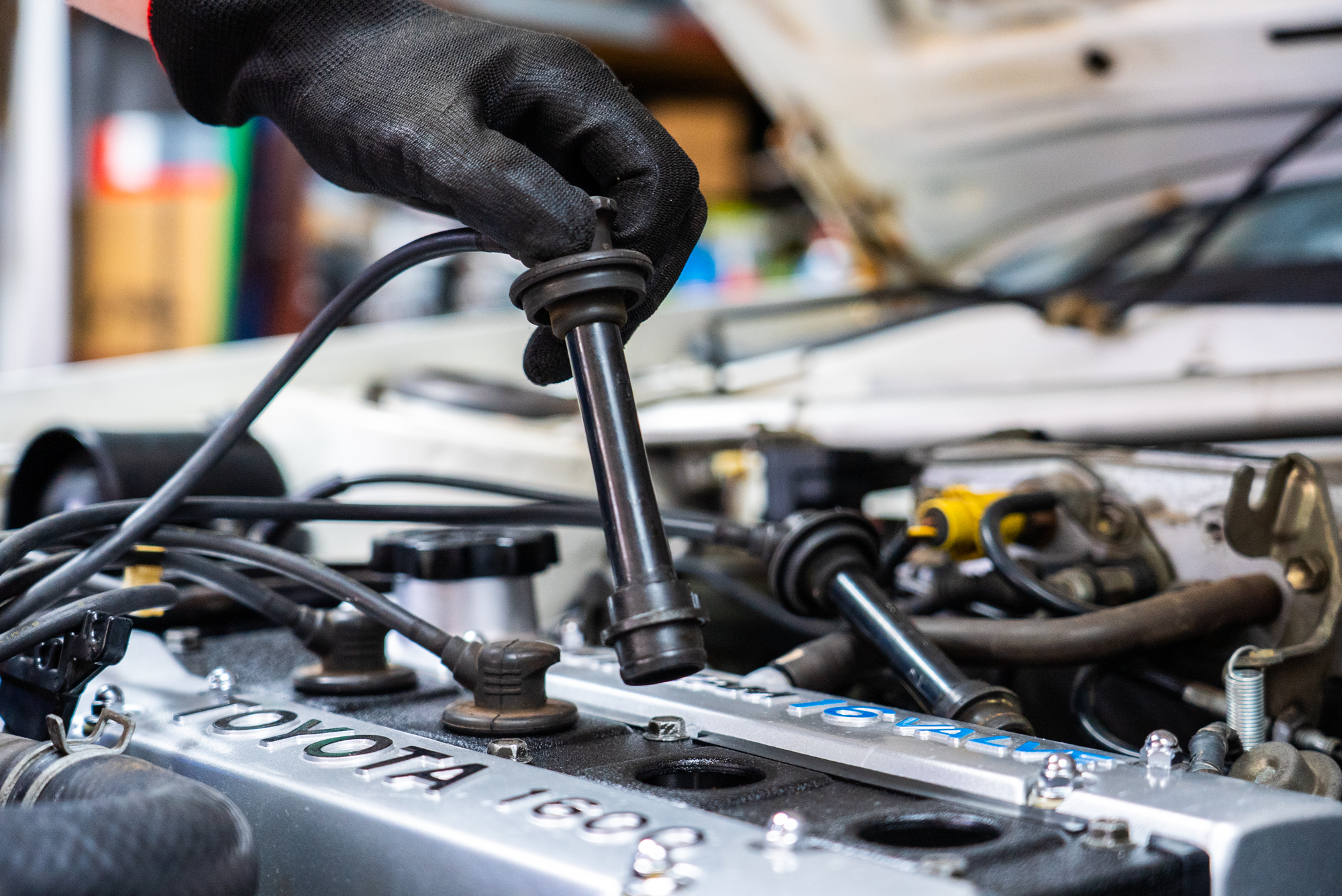
Inspect and clean
Give the lead a gentle bend and look for any signs of cracking. Damaged leads can lead to misfiring and should be replaced. The same applies to coil packs. Now grab your work light and take a look down the spark plug tube. You’re looking for any debris which could fall into the cylinder when the spark plug is removed. Use the air blow gun to clear this away, or the small brush to loosen it up, and the vacuum cleaner to remove it.
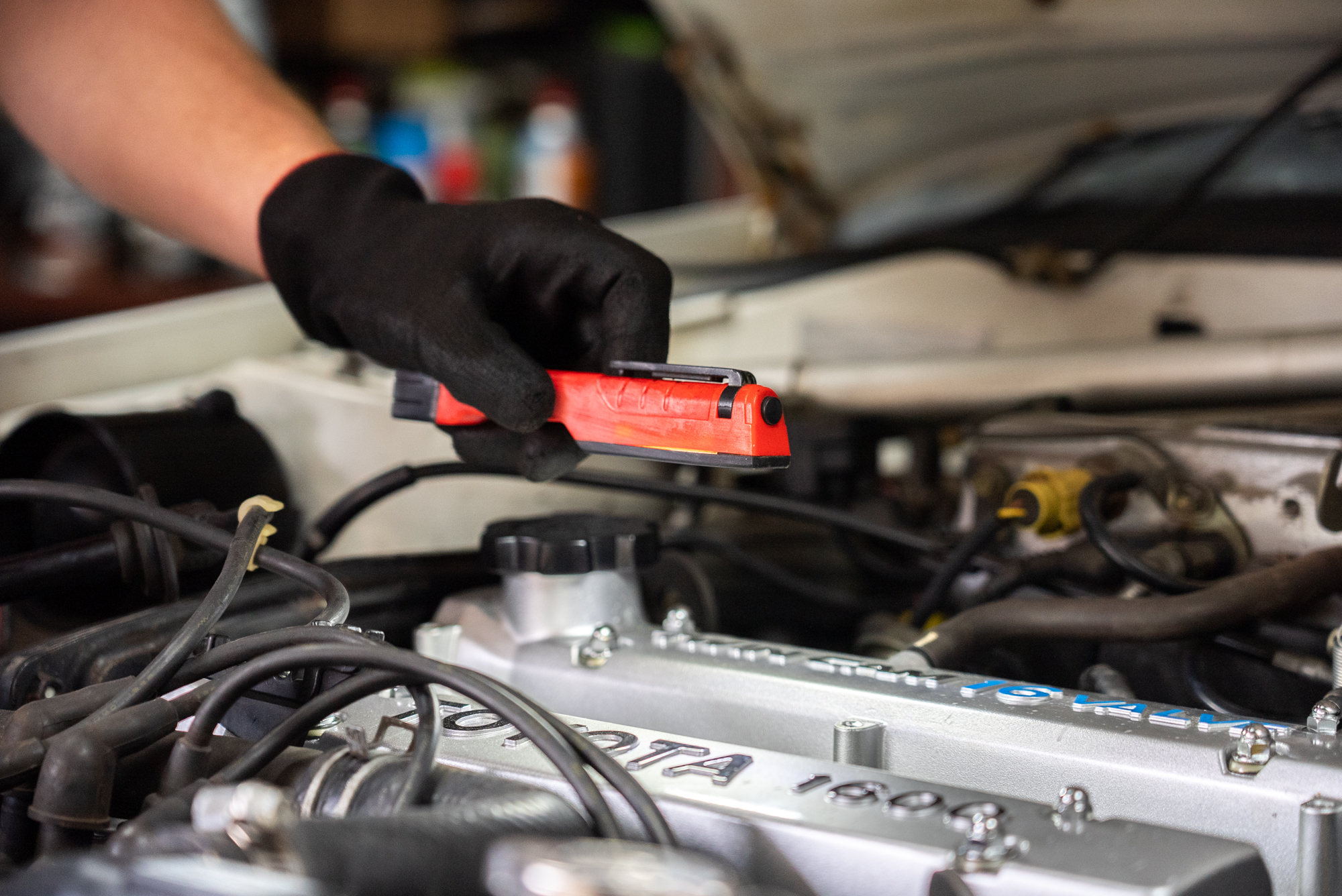
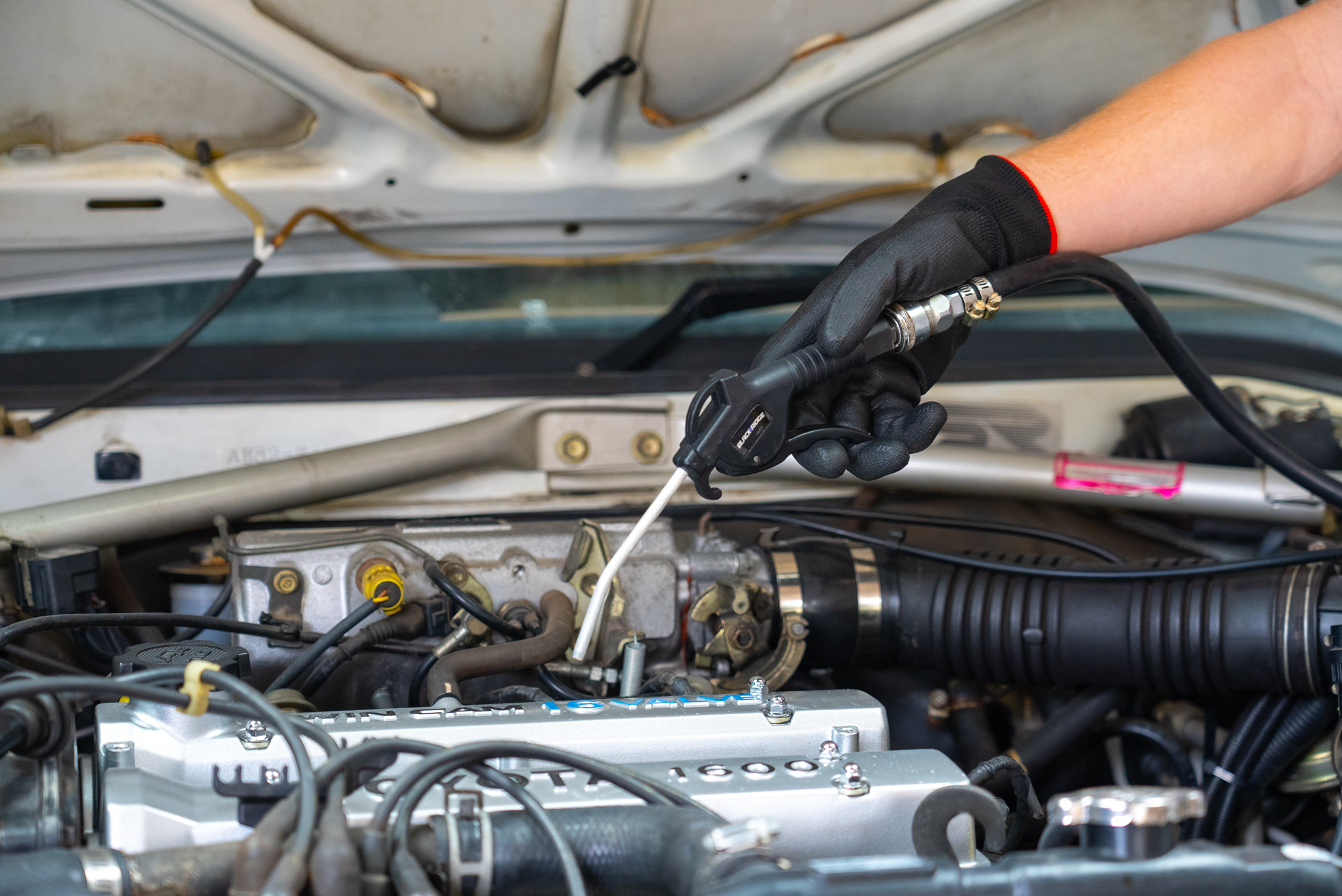
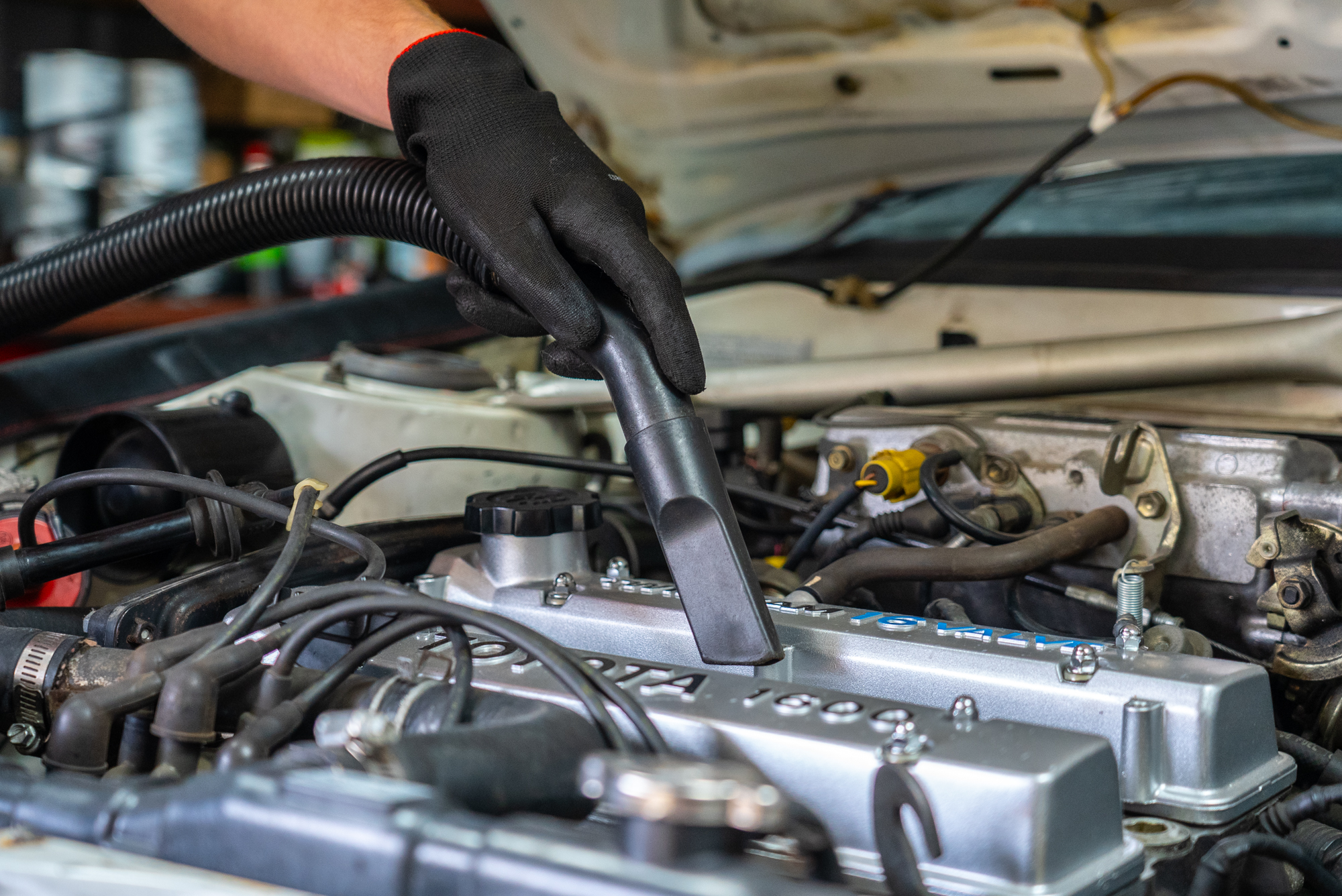
Remove the spark plug
Pop a spark plug socket on the end of the extension. There should be a couple in your socket set and it may take a few goes to find the right size. Then undo the spark plug counter-clockwise. All spark plug sockets contain a rubber insert to grip the spark plug so you can lift it from the tube. How super!
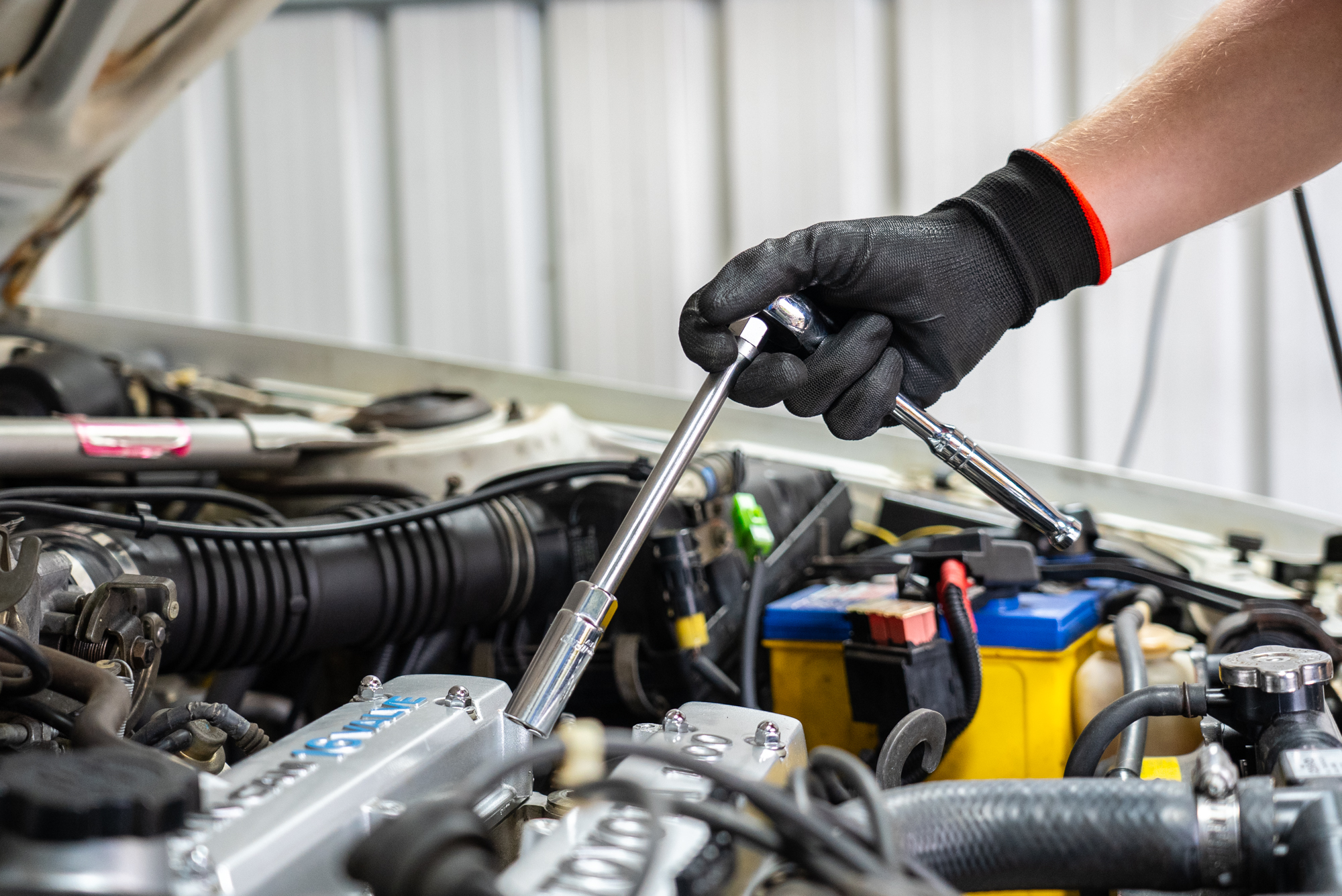
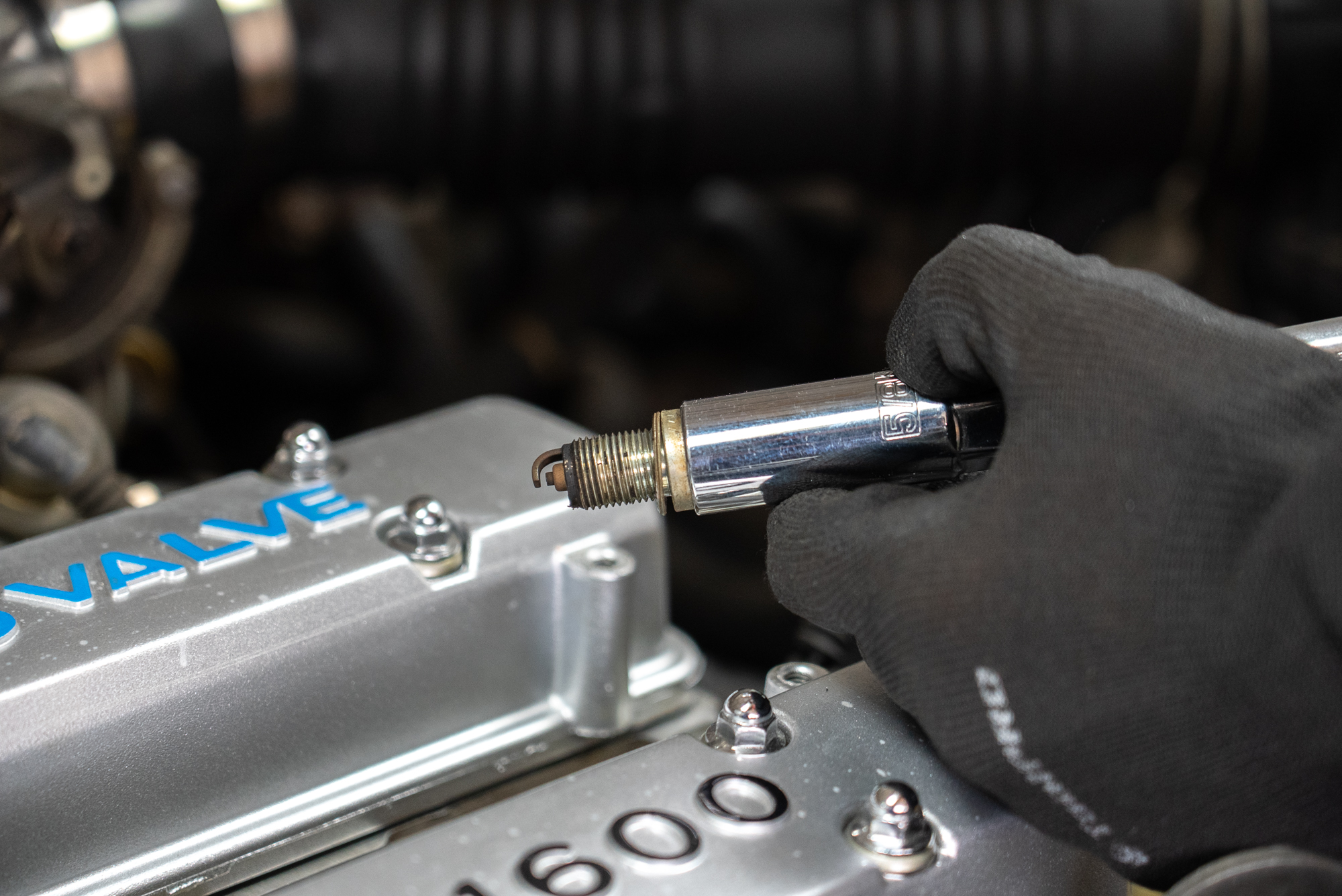
Prepare your new spark plugs
First do a side-by-side comparison to ensure that you have the right spark plugs.
Especially check that the thread pitch and length are the same. Then check the gap by slipping
your gap tool between the electrodes. Be gentle when doing this with iridium or platinum tipped
spark plugs.
You’ll find the correct gap printed in your workshop manual.
If the gap requires adjustment, gently pry the electrodes apart with the gap tool to open the
gap or press the plug down onto a firm surface to close the gap.
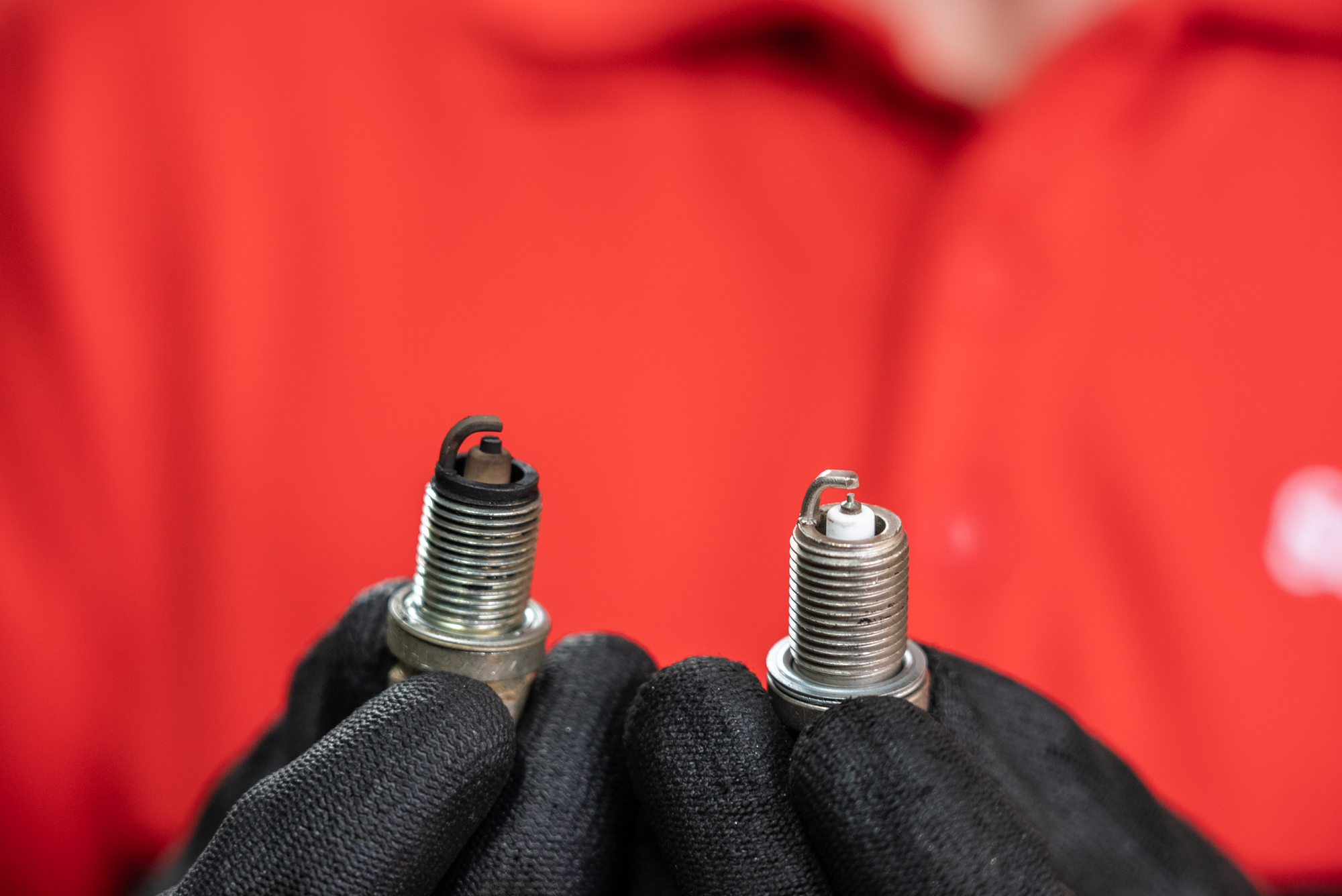
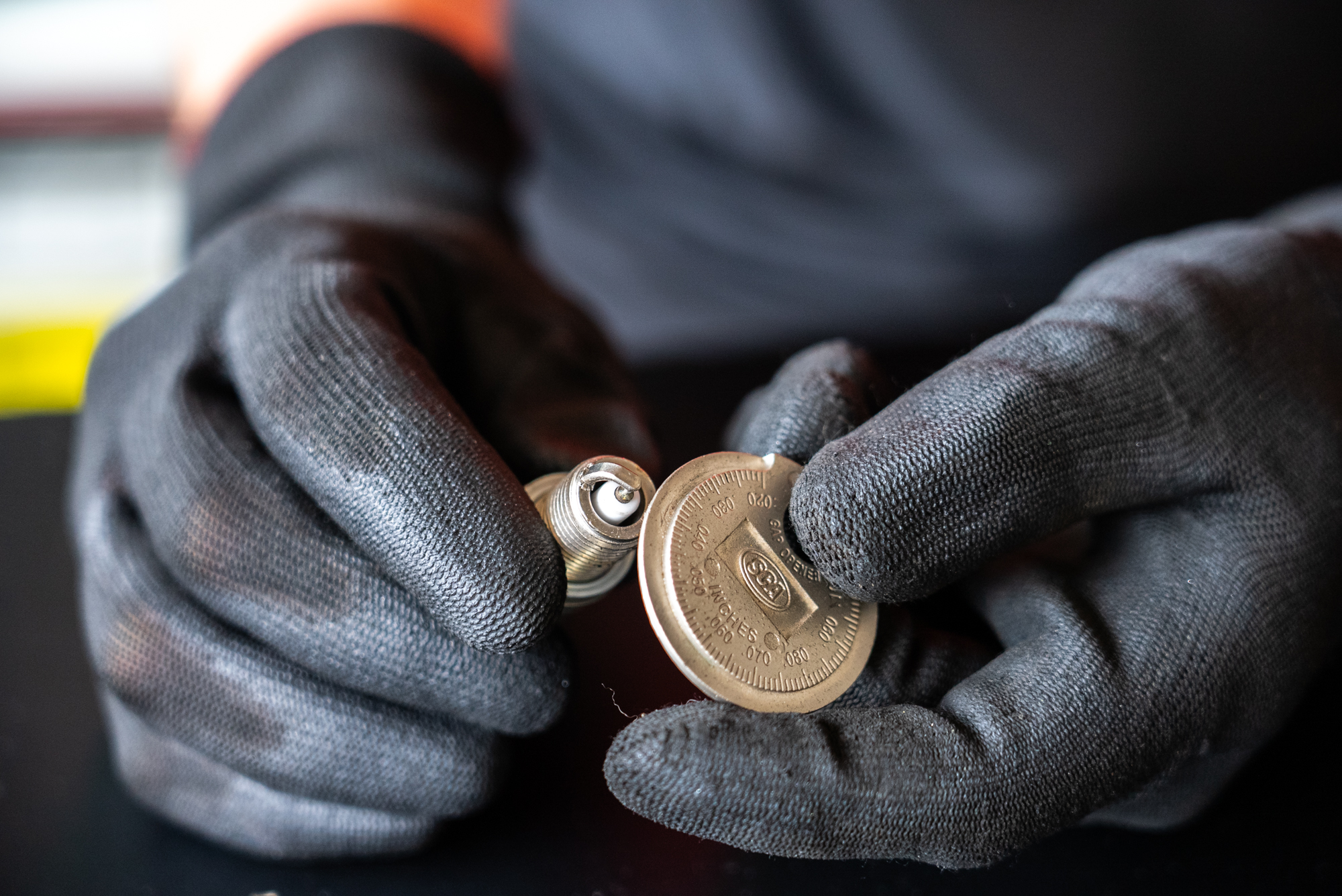
How to change spark plugs
Replacing the spark plugs is as simple as popping the new spark plug into your spark plug socket; and winding the spark plug in by hand using the extension. Do not apply the torque wrench until you are sure that the spark plug has properly engaged the threads. You’ll find the correct torque setting for the spark plugs in your workshop manual.
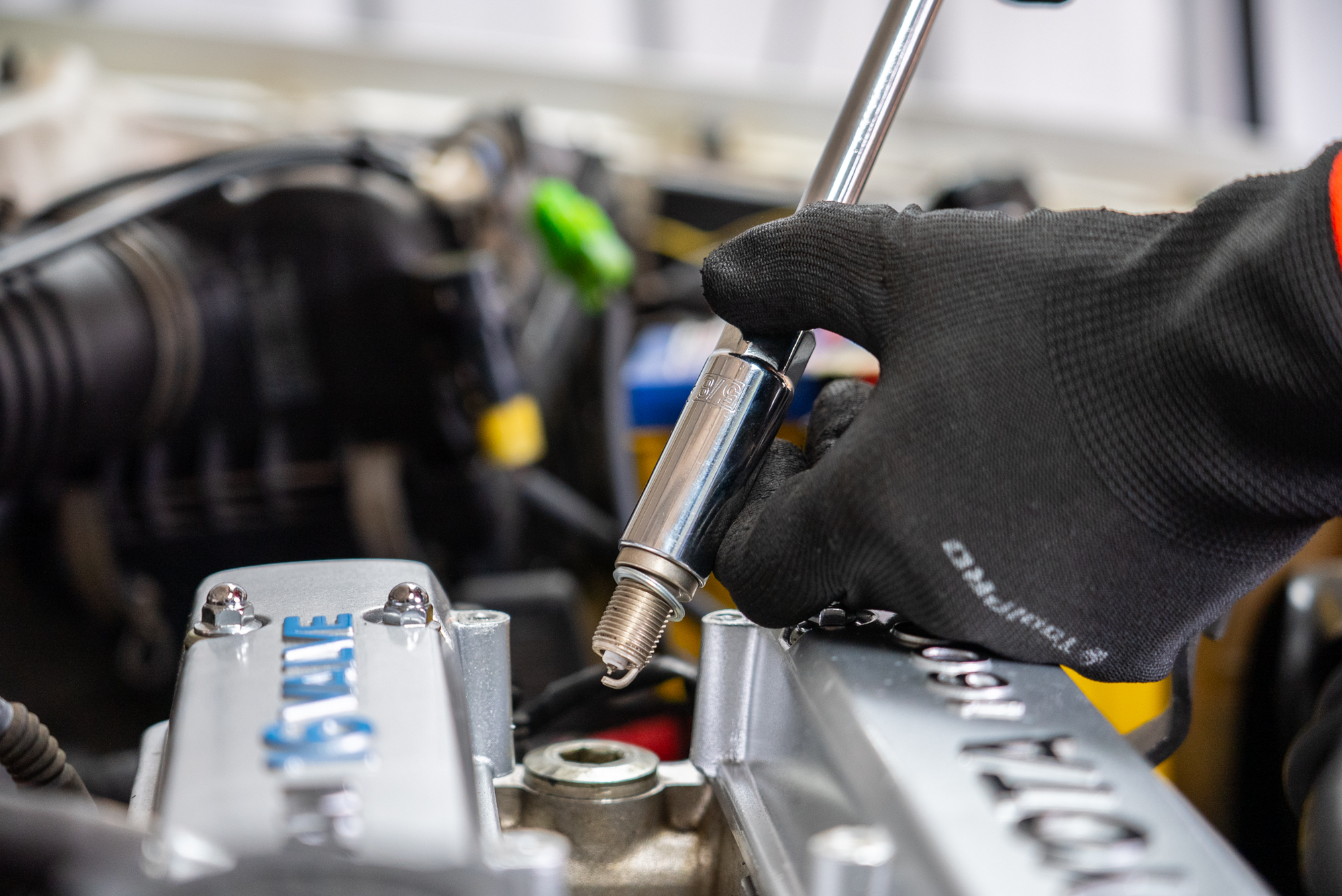
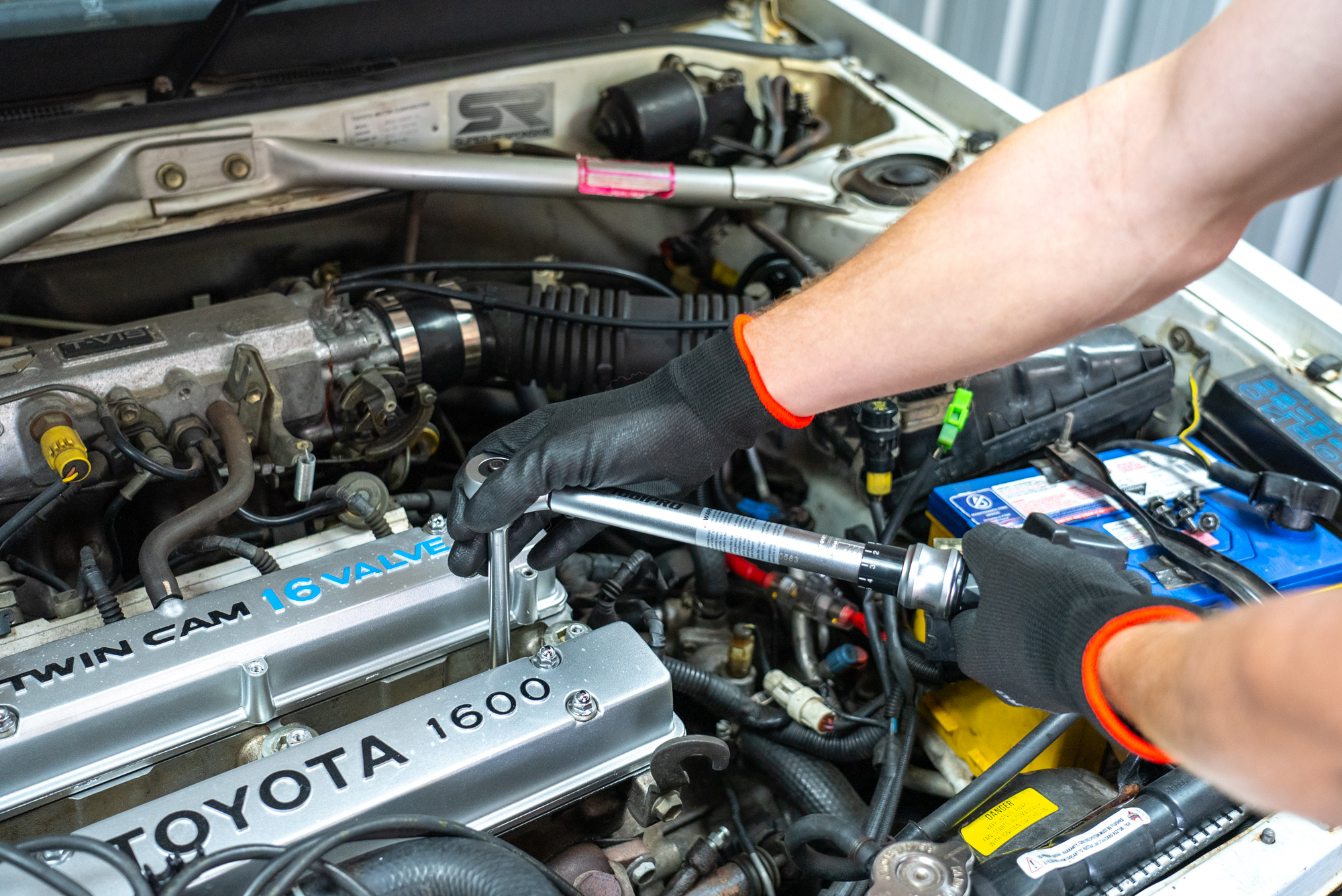
Re-fit the ignition leads or coils
Use the small paint brush to apply a smear of dielectric grease just inside the first 1cm of the lead or coil. This will make it easier to remove next time. Then simply push the coil or lead onto the plug with a little twist if necessary to seat it. Replace any fasteners which were removed earlier.
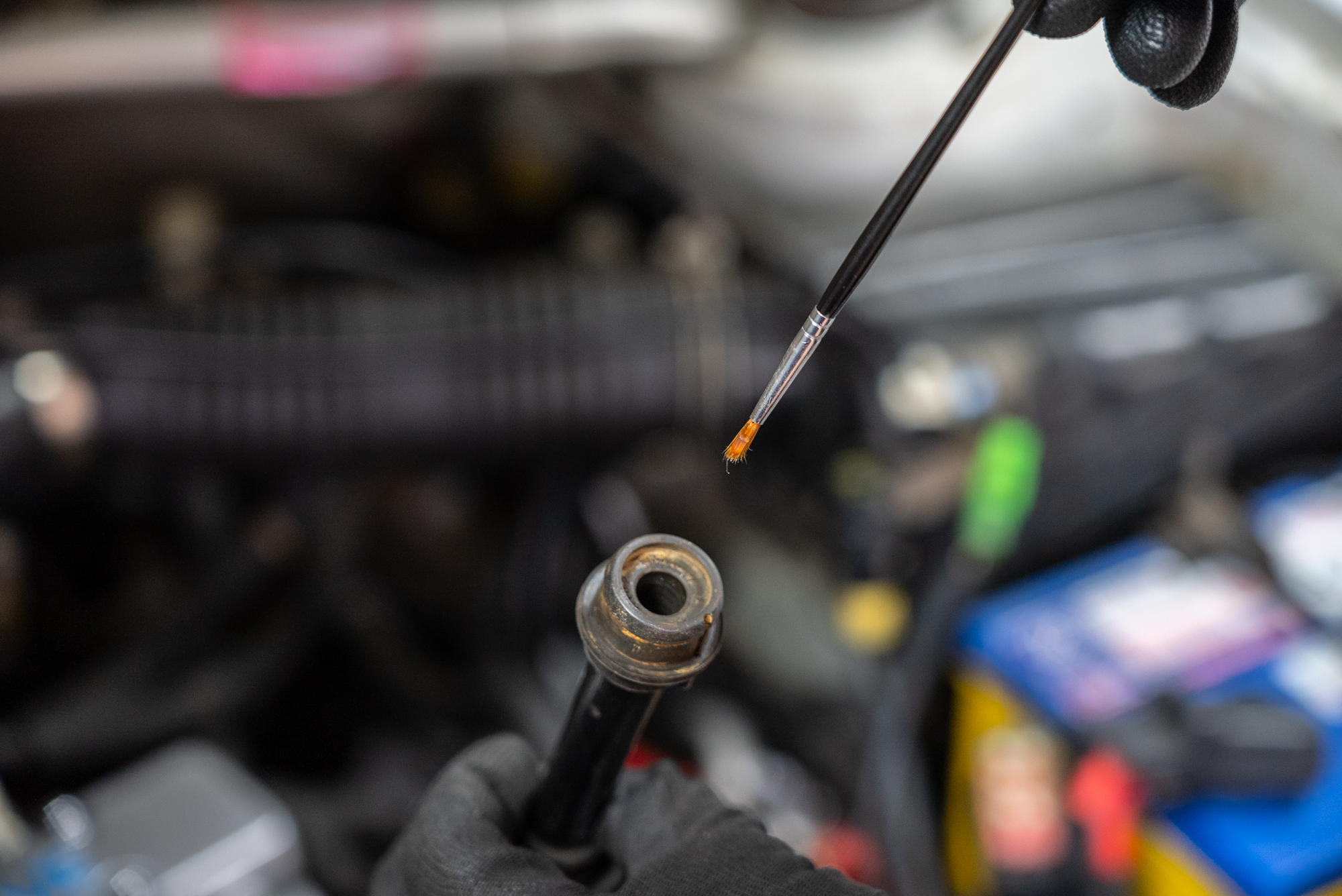

Start The Engine
Close the bonnet and start the engine to confirm the plugs and leads are functioning properly and the engine is not misfiring.
Safety
The key safety consideration when changing spark plugs, as with any job; is personal protective equipment. Gloves and safety glasses are essential for this job. You should also take steps to secure the vehicle with the transmission in park or gear, handbrake on, and wheels chocked. When you change spark plugs you’re working with parts which get quite hot, so ensure your car has been switched off for a while to cool down.
Tips
How often should I change my spark plugs?
It's crucial to adhere to your vehicle's maintenance schedule for spark plug replacement. However, several indicators might signal the need for an earlier change. If you are experiencing rough idling, hard starts, or engine surges and hesitation, it could point to worn or damaged spark plugs causing misfires.A loss of acceleration or power suggests misfires are leading to incomplete combustion. Additionally, if you notice reduced fuel efficiency, it may be due to spark plugs failing to properly ignite the fuel-air mix, resulting in unburned fuel being wasted through the exhaust.
What if my vehicle doesn’t have High Tension (HT) leads?
If your vehicle does not have High Tension leads, also known as spark plug leads or ignition leads; then you will have coil packs instead. The process for changing spark plugs when you have coil packs is exactly the same; but removing coil packs is a little different. Each coil pack is held in place with one or two bolts or screws. Remove these and pull the coil pack from the top of the spark plug. You may need to unplug the coil pack if the wiring loom is too short.How do I troubleshoot if my engine misfires after spark plug replacement?
If your engine misfires after spark plug replacement, the first and easiest thing to check is that the coil packs or ignition leads are firmly seated on each spark plug. If this doesn’t fix the problem then closely inspect each lead again. Even a small crack can cause the spark to jump out of the lead before it reaches the spark plug. Finally, double check the torque on each spark plug. If you forgot to torque one up; that cylinder will leak and potentially misfire.How to clean spark plugs?
If you have inspected each spark plug and deem them to be in good condition, you can clean them, re-gap them, and re-fit them. To clean a spark plug, use a wire brush to remove carbon deposits. If your spark plugs are iridium or platinum tipped; use a brass wire brush which is a little more gentle. Then grab a can of electronics cleaner and rinse away the remaining loose deposits. After you’ve checked and adjusted the gap on each spark plug, they are ready to be re-installed.*Important information* - Click here to read more about our DIY Advice Terms and Conditions.